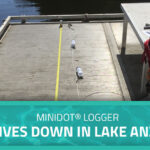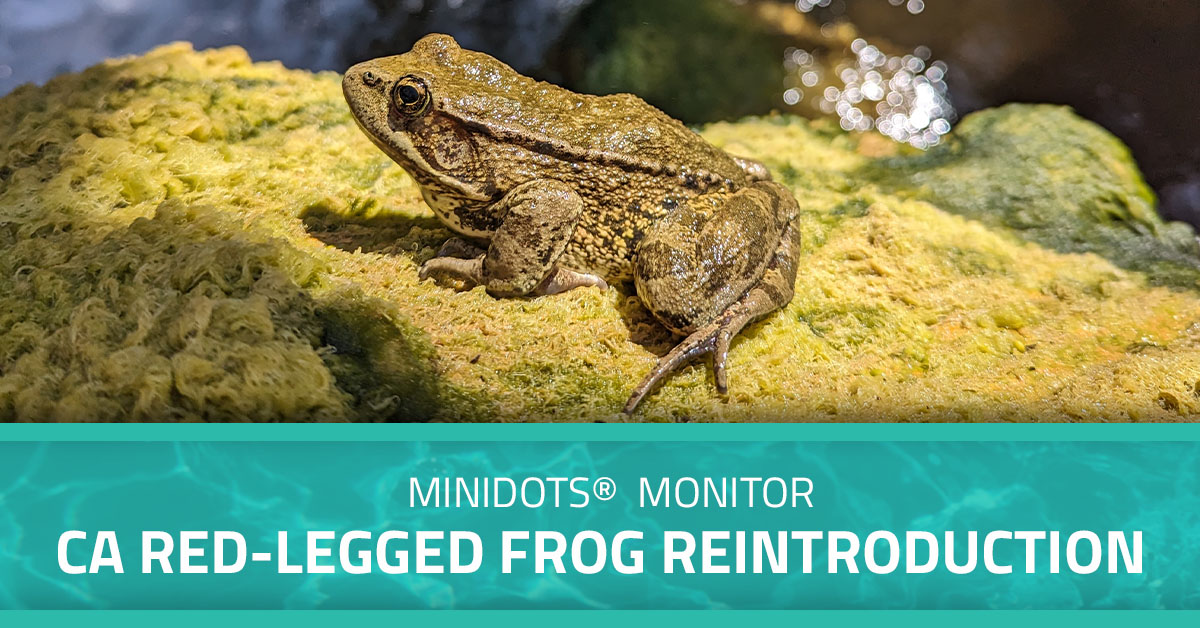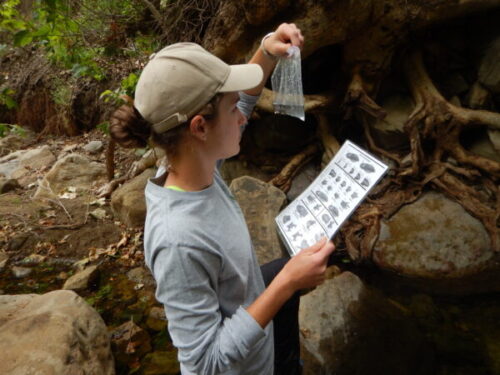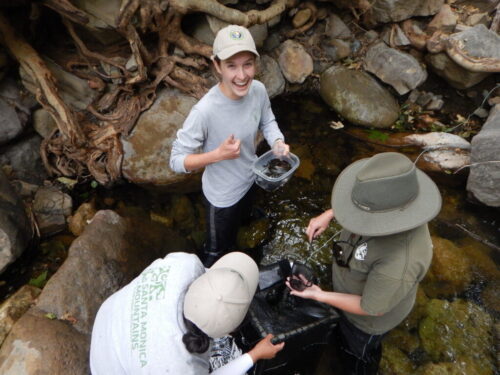
miniDOT® Loggers in East Africa’s Mara River
September 14, 2023
miniDOT® Logger Dives Down in Lake Anza
January 16, 2024miniDOTs® Monitor CA Red-Legged Frog Reintroduction
Project Details
- PRODUCT(S): miniDOT® Logger
- APPLICATION: Surface Water
- PARAMETER: Dissolved Oxygen, Temperature
- LOCATION: Santa Monica Mountains, Southern California
- ORGANIZATION: Santa Monica Mountains National Recreation Area
- RECOGNITION: Sarah Wenner, Heidi Cutia and Katy Delaney

Case Study Description
When imagining a rich wilderness, places like Los Angeles seldom come to mind. The Southern California city is now the second-most populous in the United States; but it was not always the urbanized area we picture today. Remnants of untamed areas like Santa Monica Mountains National Recreation Area have been preserved, and dedicated researchers continue to guard the integrity of diverse ecosystems within the park’s borders. The California red-legged frog (Rana draytonii) was formerly among the most plentiful native species in the region, but recent decades have seen their numbers dwindle to near-extinction. Now considered a federally threatened species, wildlife ecologist Katy Delaney and her team of biological technicians, including Sarah Wenner and Heidi Cutia, are working to promote the recovery of California red-legged frogs through reintroductions.

Stationary Specimens in Dynamic Conditions
Reintroduction efforts for the California red-legged frog began in 2014, just over 40 years after they had last been spotted in the Santa Monica Mountains. National Park Service biologists started by collecting egg masses from neighboring populations. The delicate egg masses were transferred into fine-mesh cages and deployed in several pools naturally forming within the mountain’s streams. While the cages offer protection from predators and the stream’s stronger currents, eggs and freshly hatched tadpoles remain secured as the water around them constantly changes. Sarah Wenner, a current Ph.D. candidate and a biological technician has worked extensively on the reintroduction project. In a recent interview, Wenner explained that dissolved oxygen (DO) and temperature have been closely correlated with tadpole growth rates and development.
The miniDOT® loggers are deployed alongside the cages, rarely more than a meter deep, to ensure DO and temperature levels remain hospitable. Data gathered by the miniDOTs® will help diagnose and prevent mortalities throughout the rearing process. If a pool became stagnant, increased water temperature and decreased DO levels could lead to higher mortality rates of tadpoles; by tracking these changes, the team can relocate the rearing pens to more suitable environments. By leaving the miniDOTs® deployed year-round, biologists will also gain insight into the long-term fluctuations of the frogs’ natural habitats.
Surviving Setbacks & Optimistic Outcomes
Despite the team’s diligent efforts, some setbacks to the project’s timeline have been inevitable. By 2018, frogs which had matured from transplanted egg masses were successfully reproducing without intervention at two of the four stream sites. Unfortunately, that same year saw the Woolsey Fire sweep across the region. The subsequent lack of vegetation coupled with uncommonly high rainfall left the mountain streams inundated with silt. Still, there was evidence some adult frogs survived the fire and debris flows.
Wenner explained that, despite their hardiness, the California red-legged frog’s survival as a species will hinge on their successful annual reproduction. Among the four translocated colonies only one continues to reproduce unaided, having done so annually since 2017. To avoid the loss of future egg masses as occurred after substantial rains, biologists have partnered with the Santa Barbara Zoo to ensure some egg masses are raised in a secure environment. Although the project has encountered several disheartening obstacles, the team remains optimistic that the frogs may once again take root in their native habitat. The recent discovery of one once lost miniDOT® has been the latest in a handful of silver linings. Despite being swept away two years prior in 2019, the miniDOT® resurfaced with minimal damage and in working order, proving that some things can indeed come back in the Santa Monica Mountains.
Product Description

The miniDOT® Logger is a completely submersible instrument that logs dissolved oxygen and temperature measurements. Data is recorded on the internal SD card and operational functions, like setting time and sample intervals, can be accomplished via USB cable. The oxygen sensor is an optode that measures dissolved oxygen concentration in water through a fluorescence method. The miniDOT® can withstand temperatures ranging from 0 – 35°C with a depth rating of 300 meters.

